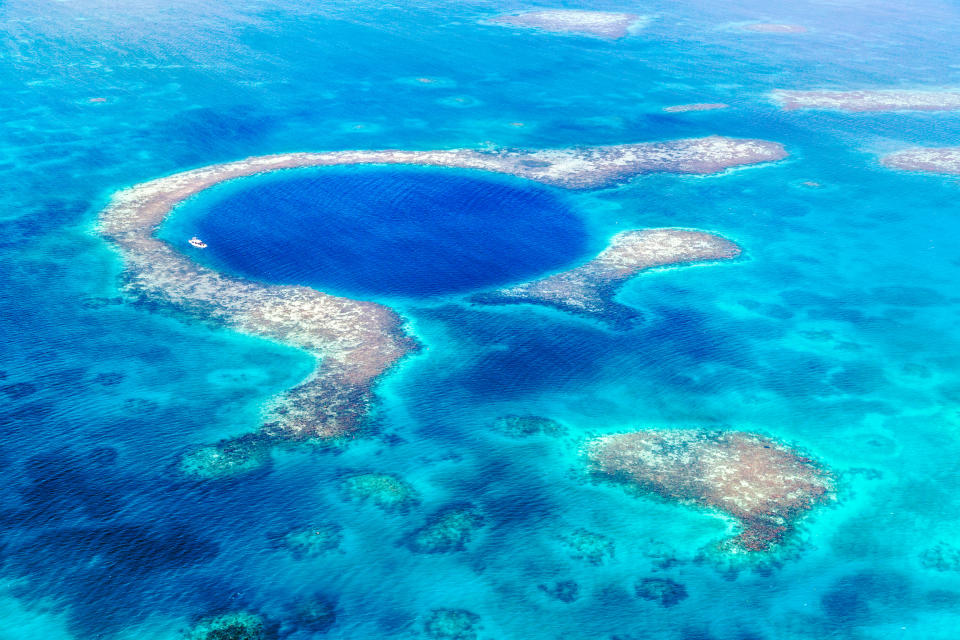Sad truth behind what's at bottom of world's largest sinkhole
While accompanying an expedition to below the world’s largest sinkhole, Sir Richard Branson revealed the shocking truth about what lies beneath.
Located in the Caribbean sea, off the coast of Belize is The Great Blue Hole, a cavern apparently large enough to swallow two Boeing 747s with ease.

The Virgin founder recently accompanied scuba divers on a submarine exploration plunging to the deep, dark bottom of the sinkhole – “an unexplored legend of the deep filled with Mayan mysteries and myths of monsters and wonder”.
While he failed to discover traces of mythical creatures he was shocked at what they did find.
“We were in Belize to support the work of Ocean Unite to promote ocean awareness and the importance of strongly protecting at least 30 per cent of the ocean by 2030,” Branson wrote on his blog post at virgin.com last month.
A post shared by Richard Branson (@richardbranson) on Dec 4, 2018 at 4:32am PST
“The ocean is so critical to all of us and we want to do all we can to protect it.
“As for the mythical monsters of the deep? Well, the real monsters facing the ocean are climate change – and plastic,” he wrote.
Scientists looking at reusable plastic bottles make shocking find
Dead sperm whale found with more than 1000 pieces of plastic in its stomach
The disturbing truth behind the success of supermarket giants’ plastic bag ban
“Sadly, we saw plastic bottles at the bottom of the hole, which is a real scourge of the ocean.
300ft down the #BlueHole we could see where rock used to be land & turned into sea – one of the starkest reminders of the danger of climate change I’ve ever seen https://t.co/ZLr3rrysxt @oceanunite @virginvoyages pic.twitter.com/yYlsuo2WtO
— Richard Branson (@richardbranson) December 4, 2018
Claiming his airline was “leading the charge” against plastic waste, Branson urged others to consider their environmental footprint.
“We’ve all got to get rid of single-use plastic,” he said.
“Our team all feel passionately about the environment. With every item we buy, every piece of food we serve, the environmental impact is paramount. There will be no single-use plastic on-board.”
The expedition was part of a Discovery Channel broadcast, which Branson hoped would help raise more awareness of the need to protect the ocean and tackle climate change “before it is too late”.
The discovery comes a month after a sperm was found dead, washed ashore with more than 1000 pieces of plastic in its stomach, in eastern Indonesia.


